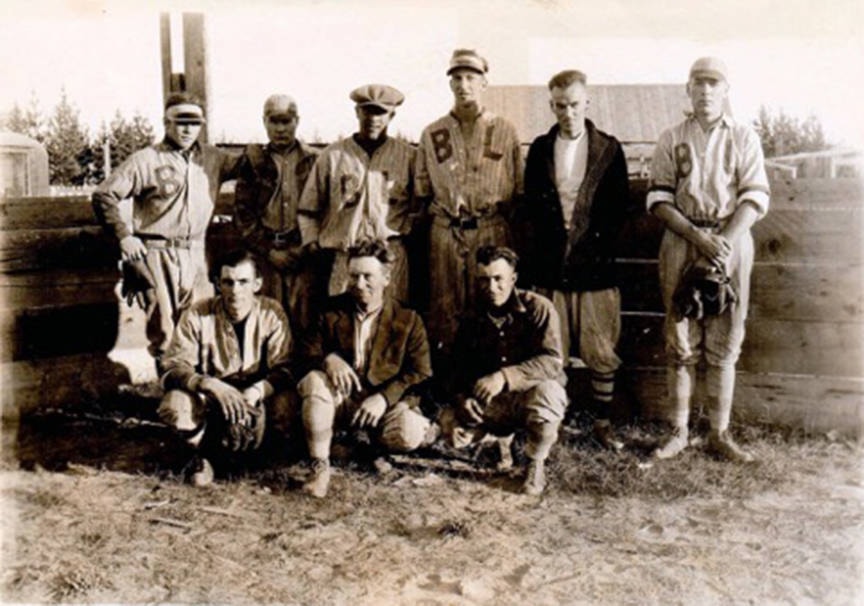© Lakes District Museum Society
Starting in the 1920s, baseball was a popular pastime in Lakes District. Most communities had a hardball team, and over the years, fierce rivalries developed.
Box scores were front-page news in the Observer, undoubtedly in part because the newspaper’s diminutive publisher, Sidney Godwin, was a rabid baseball fan. Godwin liked to sit in the stands and razz the opposing team’s pitcher to the point of distraction.
Tempers were lost during one dramatic game played July 4, 1929 between teams from Burns Lake and Ootsa. Sprinting toward home plate, one Oosta Lake baserunner tried to jump over Burns Lake catcher Taylor Jensen, accidentally kicking him in the process. Jensen was not amused, and responded by throwing a ball at the runner’s head. Both players subsequently bowed out of the game, which ended in a 10-10 tie.
A month later, a game played in Burns Lake between Ootsa and Smithers supposedly featured “the choicest of the ball players of the Interior.” One local star was notably absent, however; Jensen, perhaps still recovering from his injuries, did not take the field “for the first time in many years.”
The man known locally as the “dean of baseball players” was sorely missed. According to the Observer, when Ootsa pitcher Shorty Lansdon served up his stuff in the first inning, everyone could handle it but replacement catcher John McKenna.
Lansdon’s wildness and McKenna’s inexperience allowed the Smithers team to score 10 runs in the first inning. “It took Johnny McKenna half an inning to tame him down,” reported Godwin, “after which they worked in perfect harmony, and laughed joyously as they overcame the apparently impossible lead” to win 16-14.
Forty-five years later, baseball was still popular in the region, and Burns Lake Little League registration was in full swing. The organization accepted players between the ages of 10 and 16 – but only if they were male.
Many early ball games were played on a diamond located near the present site of Burns Lake’s tennis courts. Some old timers say that if you stand there long enough on a cool, quiet summer evening, you can almost hear the cheers of yesteryear.
